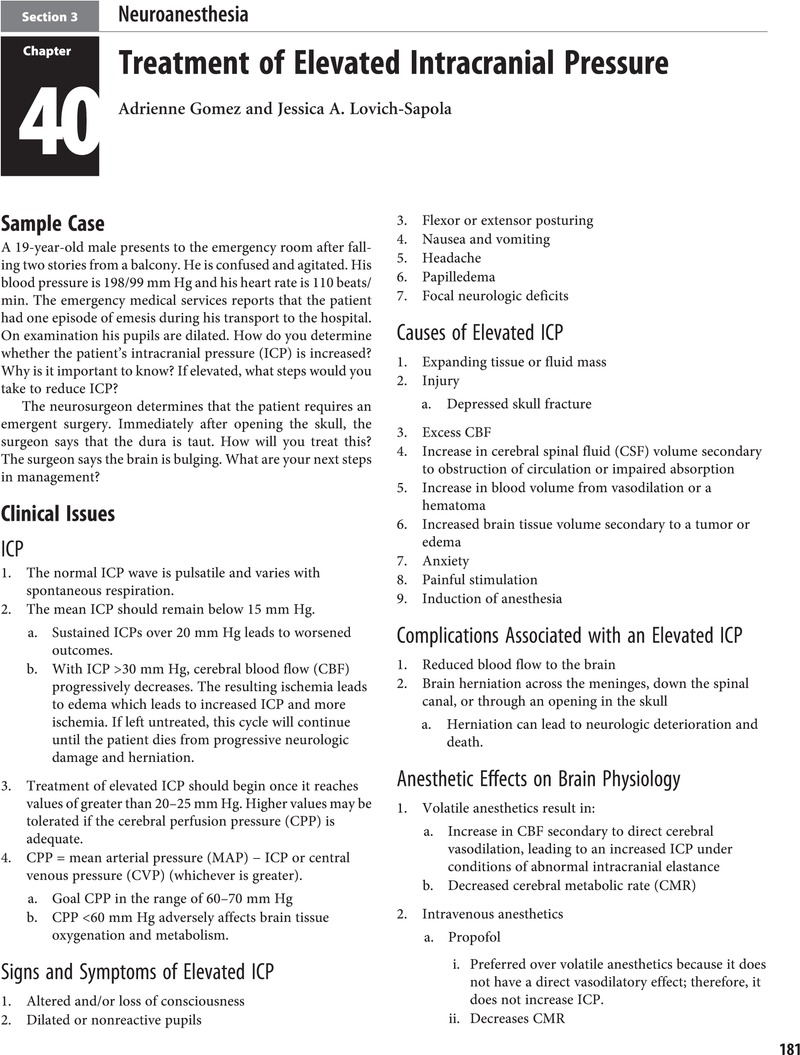Book contents
- Anesthesia Oral Board Review
- Anesthesia Oral Board Review
- Copyright page
- Contents
- Contributors
- Acknowledgments
- Letter from the Associate Editor
- How to Use This Book
- Format
- Applied Exam Tips for Success
- Part I General Information
- Part II Anesthetic-Related Critical Events and Information
- Section 1 Respiratory, Airway, and Ventilator Management
- Section 2 Cardiac, Thoracic, and Vascular Anesthesia
- Section 3 Neuroanesthesia
- Section 4 Renal and Urological
- Section 5 Hepatic and Gastrointestinal
- Section 6 Obstetric Anesthesia
- Section 7 Pediatric Anesthesia
- Section 8 Endocrine
- Section 9 Trauma Anesthesia
- Section 10 Emergency Events
- Section 11 Organ Transplant
- Section 12 Post-Anesthesia Care Unit
- Section 13 Acute and Chronic Pain
- Section 14 Other Situations
- Section 15 Safety and Ethics
- Index
- References
Section 3 - Neuroanesthesia
from Part II - Anesthetic-Related Critical Events and Information
Published online by Cambridge University Press: 03 August 2023
- Anesthesia Oral Board Review
- Anesthesia Oral Board Review
- Copyright page
- Contents
- Contributors
- Acknowledgments
- Letter from the Associate Editor
- How to Use This Book
- Format
- Applied Exam Tips for Success
- Part I General Information
- Part II Anesthetic-Related Critical Events and Information
- Section 1 Respiratory, Airway, and Ventilator Management
- Section 2 Cardiac, Thoracic, and Vascular Anesthesia
- Section 3 Neuroanesthesia
- Section 4 Renal and Urological
- Section 5 Hepatic and Gastrointestinal
- Section 6 Obstetric Anesthesia
- Section 7 Pediatric Anesthesia
- Section 8 Endocrine
- Section 9 Trauma Anesthesia
- Section 10 Emergency Events
- Section 11 Organ Transplant
- Section 12 Post-Anesthesia Care Unit
- Section 13 Acute and Chronic Pain
- Section 14 Other Situations
- Section 15 Safety and Ethics
- Index
- References
Summary

- Type
- Chapter
- Information
- Anesthesia Oral Board ReviewKnocking Out The Boards, pp. 181 - 208Publisher: Cambridge University PressPrint publication year: 2023



